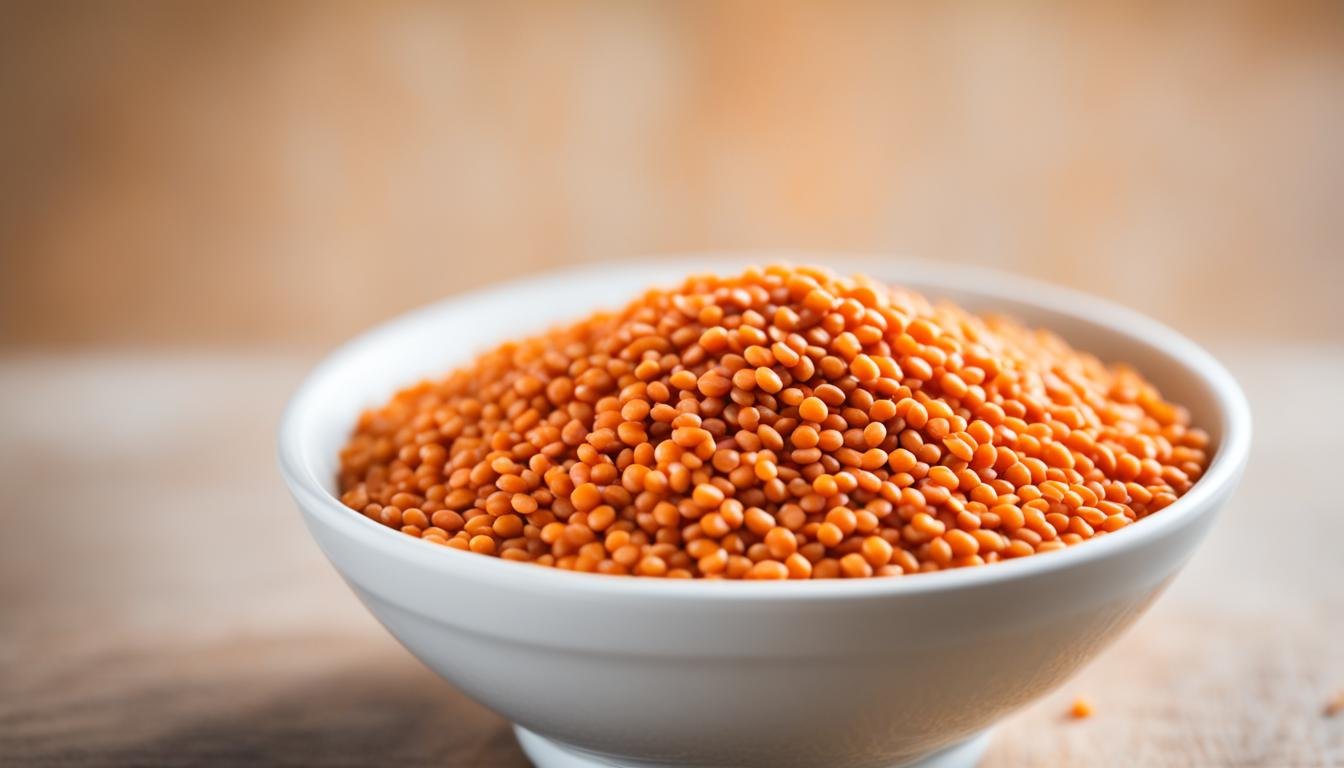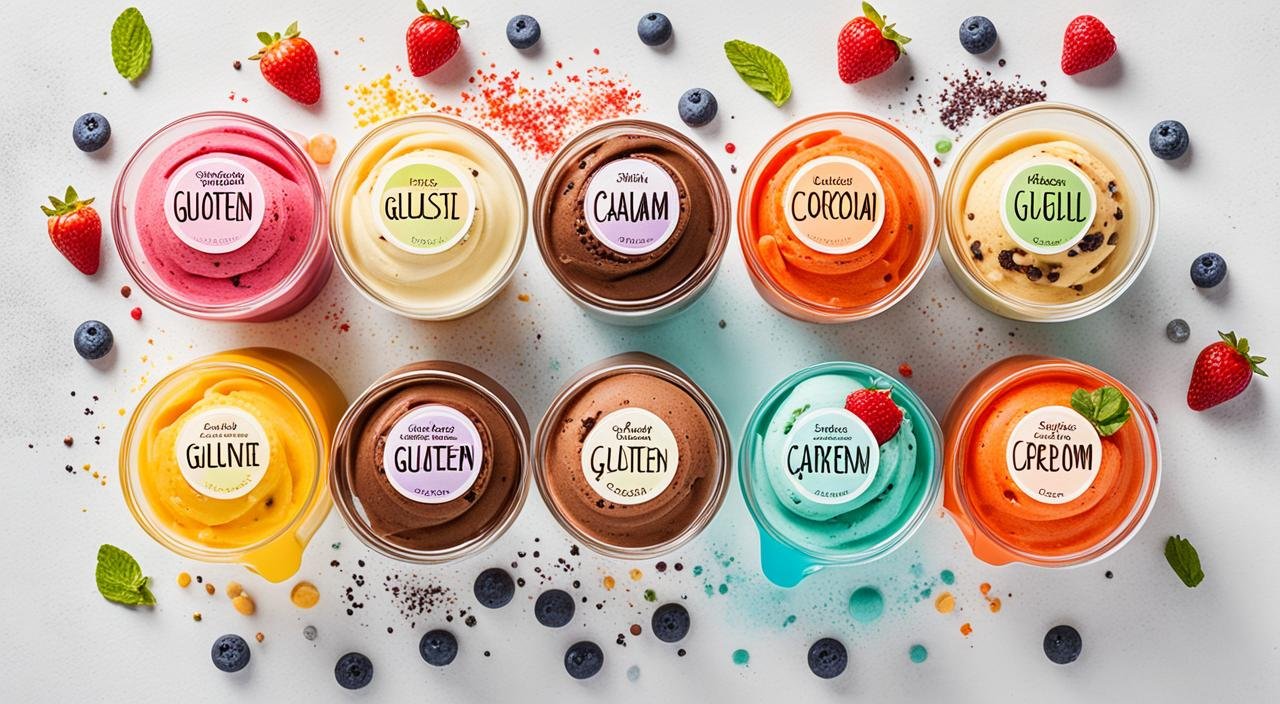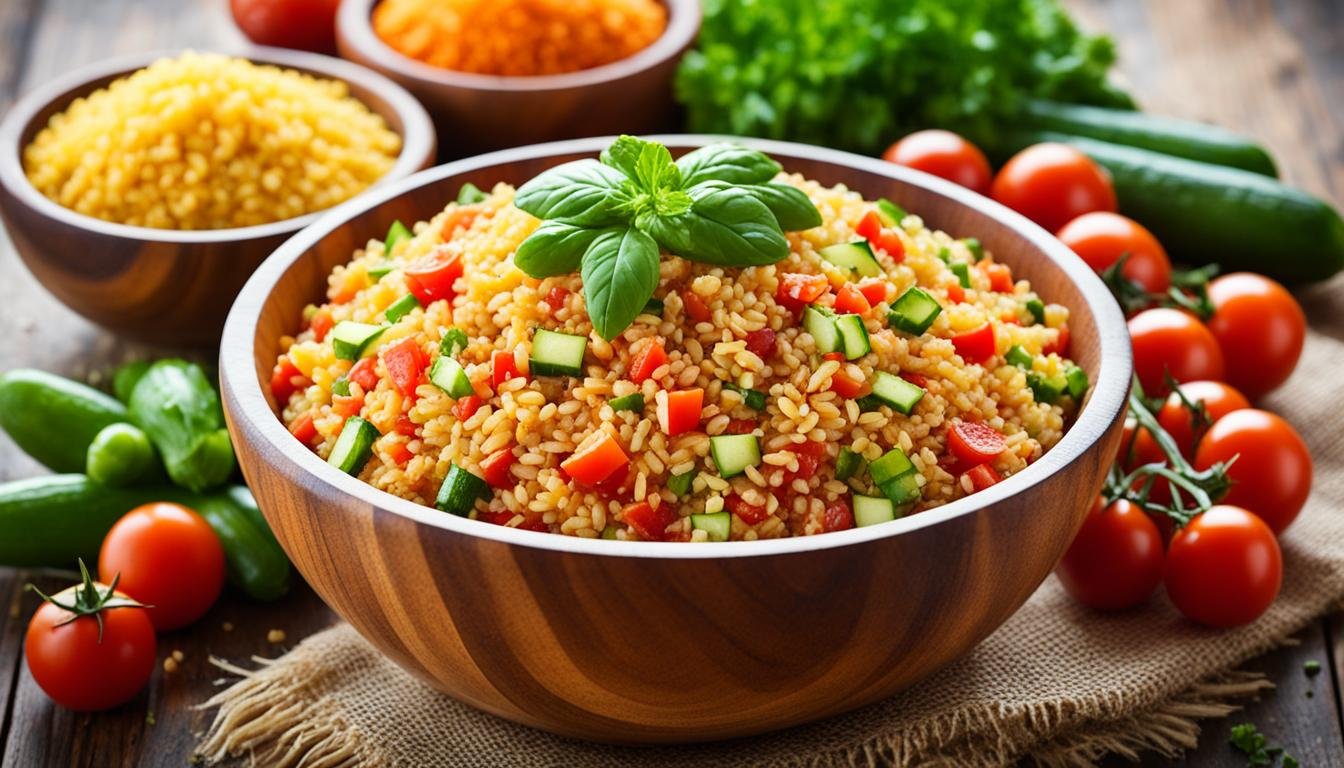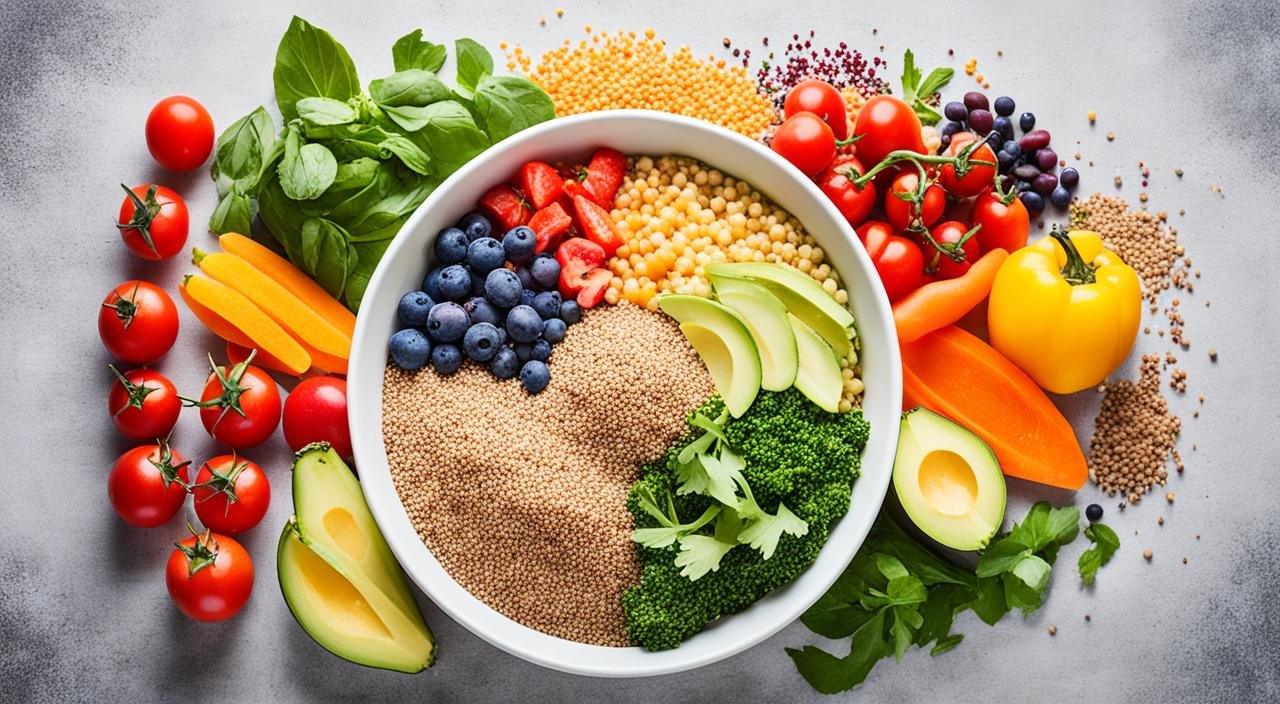Lentils are packed with protein and fiber. This makes them a great choice for those going gluten-free. But, is it safe to eat lentils if you avoid gluten? Let’s find out. While lentils don’t have gluten naturally, it’s important to watch where you get them from or how they are made.
Key Takeaways
- Lentils are naturally gluten-free legumes that are high in protein and fiber.
- Cross-contamination can be a concern with lentils, as they may come into contact with wheat, barley, or rye during processing.
- Look for certified gluten-free lentil products to ensure they are safe for those with celiac disease or gluten sensitivity.
- Antinutrients in lentils like lectins and phytates can cause digestive issues, but soaking and sprouting can help mitigate these.
- Lentil pastas can be a nutritious, gluten-free alternative to traditional grain-based pastas.
Understanding Gluten and Celiac Disease
Gluten is a protein found in wheat, rye, barley, and other grains. Gluten can be in all grains too. Celiac disease is when the immune system fights gluten. It hurts the small intestines. People with celiac disease cannot eat gluten.
What is Gluten?
Gluten means “glue” and “wheat” in Latin. It makes dough stretchy and chewy. Besides wheat, gluten is in grains like rye and barley.
Gluten and Celiac Disease Connection
For people with celiac disease, eating gluten is harmful. It damages the small gut. This can affect nutrient absorption and cause many health issues. Staying away from gluten foods is important for those with celiac disease and non-celiac gluten sensitivity.
Lentils: A Nutritious Legume
Lentils are a member of the legume family. They look like small beans growing in pods, just like peas. This family includes lentils of various colors such as red, brown, black, and green. They are known for being easy and affordable to cook. Because of this, they are popular across many countries and cultures. Also, they are rich in fiber. This is great for digestion and fits well in a gluten-free diet.
What are Lentils?
Lentils are a kind of legume that are small but mighty in protein and fiber. They can be found in many colors and are used in dishes worldwide. You can add lentils to soups, stews, and salads. They even serve as a meat alternative in plant-based meals.
Nutritional Benefits of Lentils
Aside from being a key protein source, lentils are packed with fiber. This is good for your digestion. Lentils are also low in fat and calories, making them a healthy diet choice. They bring in plenty of vitamins and minerals, such as folate, iron, and potassium. This makes lentils essential for a good nutrition plan.
Are Red Lentils Gluten Free?
Lentils, like red ones, are totally gluten-free. Yet, staying gluten-free also needs awareness, especially for those with celiac disease or gluten issues.
Organic lentils lack gluten, but they might touch wheat, barley, or rye. This can happen during farming, harvesting, packing, or storing. Such cross-contamination would mean they’re not safe for a gluten-free diet.
| Key Takeaways |
|---|
|
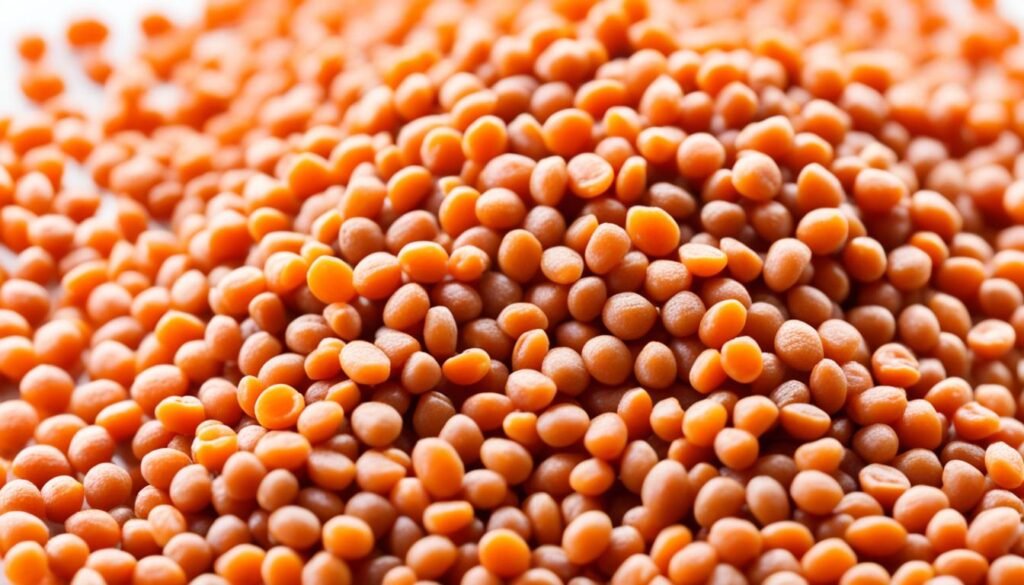
Lentils and Cross-Contamination Risks
Lentils are usually gluten-free. But, there’s a chance they may touch gluten. So, those on a gluten-free diet need to be careful. Recent studies show that some lentil items may have gluten in them.
Study on Gluten Cross-Contact in Lentils
In 2021, a study checked 25 bags of different dry lentil items from 24 brands. Two of these bags (8%) had gluten in them. Also, a study in Italy in 2022 found that 9% of gluten-free items, some with lentils, had too much gluten. The amount was more than 20 parts per million (ppm), which is the limit for gluten-free.
Checking Ingredients and Certifications
It’s important to read labels to make sure lentils are really gluten-free. Look for a gluten-free certification too. The National Celiac Association warns about buying lentils from bulk bins because of possible cross-contamination. Choosing certified gluten-free lentil products is safer to avoid any gluten by mistake.
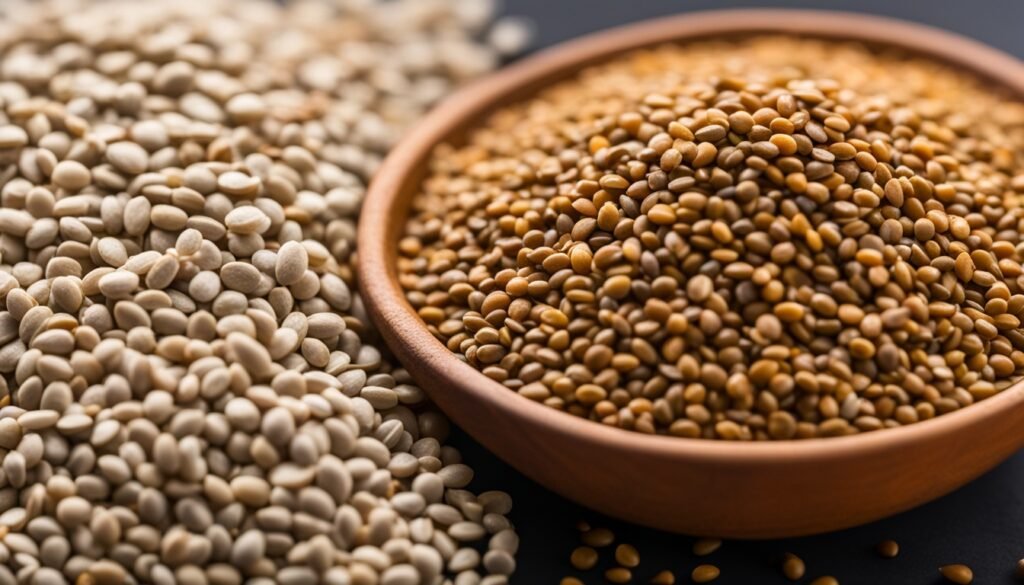
Lentil Pastas: A Gluten-Free Alternative
As more people choose gluten-free diets, they look for non-wheat pasta options. Lentil pasta is one such choice, giving a healthy, gluten-free swap for regular pasta.
Choosing Gluten-Free Lentil Pastas
For lentil pastas, pick ones made from organic lentils and are certified gluten-free. This means they’re made just from lentils, without any gluten risk. The Tolerant brand is a top choice for certified gluten-free lentil pastas.
These pastas are not only gluten-free but also rich in protein and fiber. Those on a gluten-free diet benefit from lentils’ qualities. By going for organic gluten-free ones, you can enjoy pasta without gluten worries.
Antinutrients in Lentils: Lectins and Phytates
Lentils are packed with nutrition but also have antinutrients. These are lectins and phytates. They can make it harder for our bodies to get the good stuff from lentils.
Digestibility Issues with Antinutrients
Lentils have lectins that block important nutrients’ uptake. This includes calcium, iron, phosphorus, and zinc. Phytic acid in lentils also cuts the absorption of micronutrients like iron and magnesium. This affects the nutrients we get from lentils.
Green beans are another good food choice for people who can’t eat gluten. Some people wonder if they really need to eat gluten.
Mitigating Antinutrients through Soaking and Sprouting
Cooking lentils won’t remove these antinutrients. But, there is an easy fix. Soaking and sprouting lentils can lower phytic acid. This makes it easier for our bodies to absorb nutrients from lentils.
Tips for Safely Consuming Lentils on a Gluten-Free Diet
While lentils are naturally gluten-free, being careful is key. Check their source and how they are prepared. This helps avoid cross-contamination. Some people might find lentils hard to digest. They could also cause inflammation. If you’re starting on a gluten-free diet or healing your gut, it’s safer to skip lentils for now. Wait until your gut heals and nutritional health improves.
Choose certified gluten-free lentils for your diet. Also, make sure to pick out any foreign grains. Soaking or sprouting your lentils can make them easier to digest. This process reduces the effects of antinutrients like lectins and phytates. Plus, it helps your body absorb important nutrients like calcium, iron, and zinc better.
By following these steps and watching your gut health, you can safely eat lentils on a gluten-free diet. Keep in mind that everyone’s reaction to lentils differs. It’s vital to pay attention to how your body reacts. Then, you can adjust how much you eat accordingly.

